at The New Criterion:
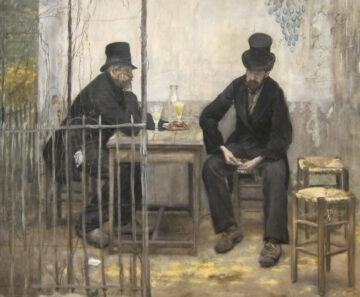 Baudelaire’s early suspicion that he had been born under a dark star seemed to be fulfilling itself. He considered becoming a monk but instead went to Belgium. “One becomes a Belgian through having sinned,” he quipped. “A Belgian is his own hell.” While walking to a church one day with the artist Félicien Rops, Baudelaire collapsed. Returning to Paris, he died in 1867 at the age of forty-six. The funeral was held in Montparnasse. Only sixty people showed up to honor the greatest poet France has ever created, but one of the mourners was Manet. Later, the journalist Victor Noir wrote, “in his last moments, his best friend was M. Manet; it was because the two natures understood each other so well.”
Baudelaire’s early suspicion that he had been born under a dark star seemed to be fulfilling itself. He considered becoming a monk but instead went to Belgium. “One becomes a Belgian through having sinned,” he quipped. “A Belgian is his own hell.” While walking to a church one day with the artist Félicien Rops, Baudelaire collapsed. Returning to Paris, he died in 1867 at the age of forty-six. The funeral was held in Montparnasse. Only sixty people showed up to honor the greatest poet France has ever created, but one of the mourners was Manet. Later, the journalist Victor Noir wrote, “in his last moments, his best friend was M. Manet; it was because the two natures understood each other so well.”
Around this time a young Parisian author and playwright, Henri Balesta, wrote a treatise Absinthe et Absintheurs (1860), which was probably (according to the pharmacologist Ronald K. Siegel) the first known book to record the socialization of absinthe abuse. Gradually, an anti-alcohol movement was growing in France as well as England.
more here.

 Practicing yoga nidra—a kind of mindfulness training—might improve sleep, cognition, learning, and memory, even in novices, according to a pilot study published in the open-access journal PLOS ONE on December 13 by Karuna Datta of the Armed Forces Medical College in India, and colleagues. After a two-week intervention with a cohort of novice practitioners, the researchers found that the percentage of delta-waves in deep sleep increased and that all tested cognitive abilities improved.
Practicing yoga nidra—a kind of mindfulness training—might improve sleep, cognition, learning, and memory, even in novices, according to a pilot study published in the open-access journal PLOS ONE on December 13 by Karuna Datta of the Armed Forces Medical College in India, and colleagues. After a two-week intervention with a cohort of novice practitioners, the researchers found that the percentage of delta-waves in deep sleep increased and that all tested cognitive abilities improved. In the nineteen-seventies, Bruce Ames, a biochemist at Berkeley, devised a way to test whether a chemical might cause cancer. Various tenets of cancer biology were already well established. Cancer resulted from genetic mutations—changes in a cell’s DNA sequence that typically cause the cell to divide uncontrollably. These mutations could be inherited, induced by viruses, or generated by random copying errors in dividing cells. They could also be produced by physical or chemical agents: radiation, ultraviolet light, benzene. One day, Ames had found himself reading the list of ingredients on a package of potato chips, and wondering how safe the chemicals used as preservatives really were.
In the nineteen-seventies, Bruce Ames, a biochemist at Berkeley, devised a way to test whether a chemical might cause cancer. Various tenets of cancer biology were already well established. Cancer resulted from genetic mutations—changes in a cell’s DNA sequence that typically cause the cell to divide uncontrollably. These mutations could be inherited, induced by viruses, or generated by random copying errors in dividing cells. They could also be produced by physical or chemical agents: radiation, ultraviolet light, benzene. One day, Ames had found himself reading the list of ingredients on a package of potato chips, and wondering how safe the chemicals used as preservatives really were.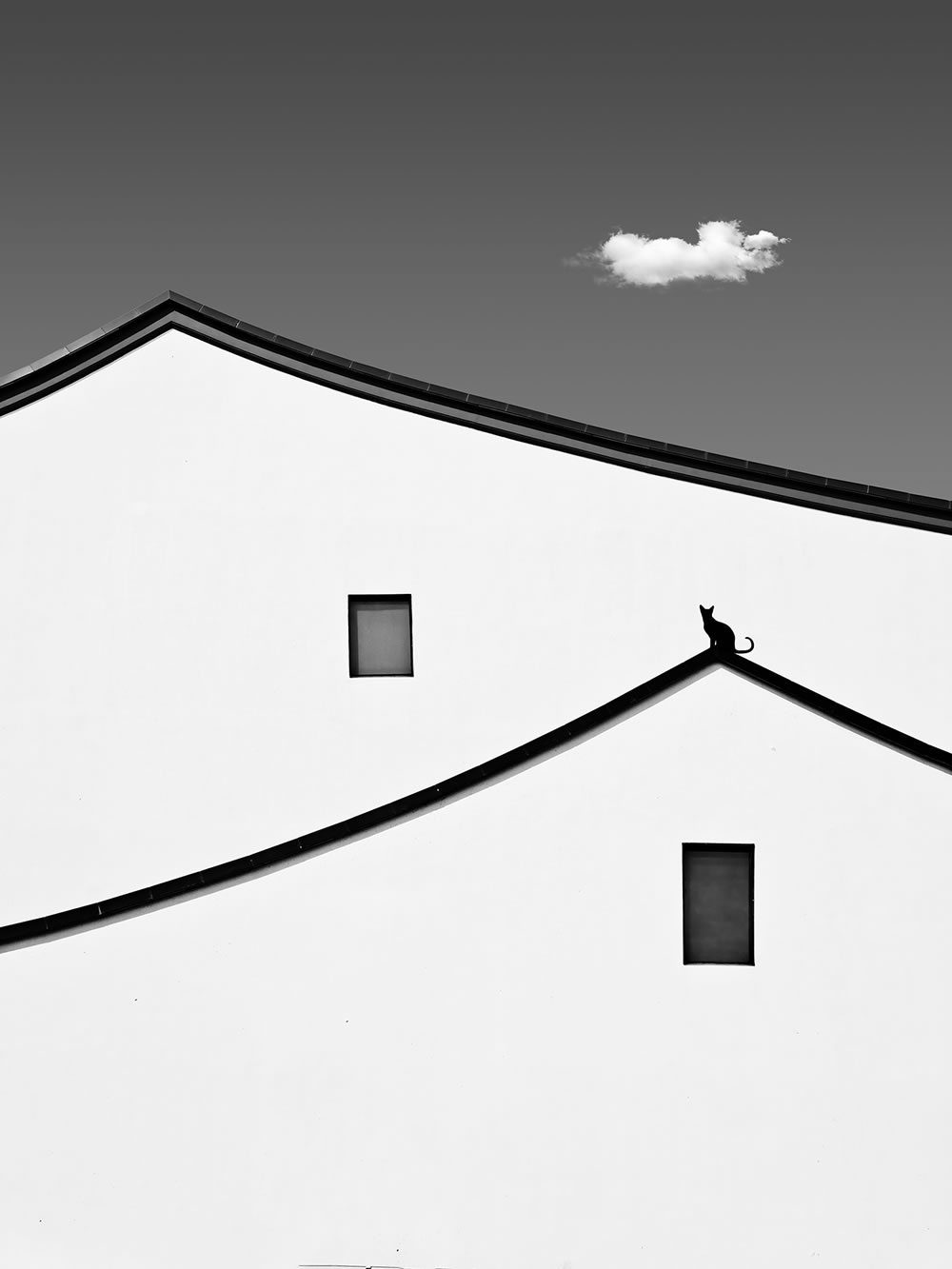
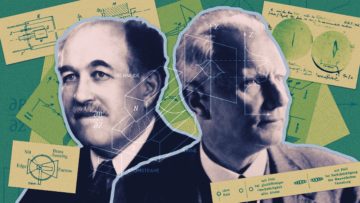 Before Erwin Schrödinger’s cat was simultaneously dead and alive, and before pointlike electrons washed like waves through thin slits, a somewhat lesser-known experiment lifted the veil on the bewildering beauty of the quantum world. In 1922, the German physicists Otto Stern and Walther Gerlach demonstrated that the behavior of atoms was governed by rules that defied expectations — an observation that cemented the still-budding theory of quantum mechanics.
Before Erwin Schrödinger’s cat was simultaneously dead and alive, and before pointlike electrons washed like waves through thin slits, a somewhat lesser-known experiment lifted the veil on the bewildering beauty of the quantum world. In 1922, the German physicists Otto Stern and Walther Gerlach demonstrated that the behavior of atoms was governed by rules that defied expectations — an observation that cemented the still-budding theory of quantum mechanics.
 MacGowan died last week at the age of sixty-five, and to many it seemed a small miracle that he lived as long as that. His fame as a drinker was almost as great as his fame as a songwriter and performer, and all that dissipation took a toll. For one thing, it could make him sound mean. In Julien Temple’s 2020 documentary, Crock of Gold: A Few Rounds With Shane MacGowan, we see him insult his wife and friends. He is in a wheelchair, frail, and white as a sheet, making his friend (and the film’s producer) Johnny Depp, only five years younger, seem like the very image of youthful vigor by contrast. “You can be a right bitch,” he tells his wife Victoria. “But you really are very, very nice. And beautiful.”
MacGowan died last week at the age of sixty-five, and to many it seemed a small miracle that he lived as long as that. His fame as a drinker was almost as great as his fame as a songwriter and performer, and all that dissipation took a toll. For one thing, it could make him sound mean. In Julien Temple’s 2020 documentary, Crock of Gold: A Few Rounds With Shane MacGowan, we see him insult his wife and friends. He is in a wheelchair, frail, and white as a sheet, making his friend (and the film’s producer) Johnny Depp, only five years younger, seem like the very image of youthful vigor by contrast. “You can be a right bitch,” he tells his wife Victoria. “But you really are very, very nice. And beautiful.” THIS PAST JULY, the University of Chicago’s National Opinion Research Center (NORC) and the Associated Press published the results of a
THIS PAST JULY, the University of Chicago’s National Opinion Research Center (NORC) and the Associated Press published the results of a  Here is a partial list of the not-medically-trained people who made the medical determination that terminating Kate Cox’s 20-plus-week-old pregnancy would not fall under an approved exception to Texas’
Here is a partial list of the not-medically-trained people who made the medical determination that terminating Kate Cox’s 20-plus-week-old pregnancy would not fall under an approved exception to Texas’ 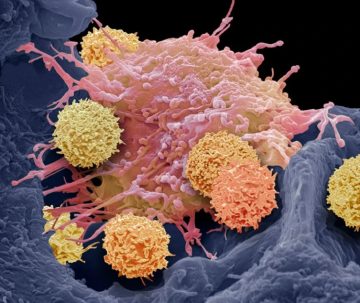 e cells have given 15 people with once-debilitating
e cells have given 15 people with once-debilitating  One Saturday evening in 1968, the poets battled on Long Island. Drinks spilled into the grass. Punches were flung; some landed. Chilean and French poets stood on a porch and laughed while the Americans brawled. A glass table shattered. Bloody-nosed poets staggered into the coming darkness.
One Saturday evening in 1968, the poets battled on Long Island. Drinks spilled into the grass. Punches were flung; some landed. Chilean and French poets stood on a porch and laughed while the Americans brawled. A glass table shattered. Bloody-nosed poets staggered into the coming darkness.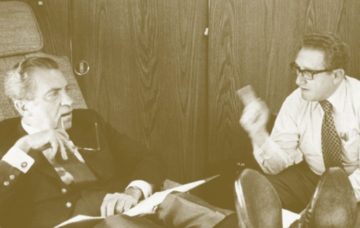 For someone who craved attention, who cultivated reporters and published several memoirs, Henry A. Kissinger liked secrecy. Or better put, he wanted others to keep secrets so that he could reveal them when and how he chose. The lengthy obituary in the New York Times recalls that in 1969, his first year as Richard Nixon’s national security advisor, he was so infuriated by leaks from the White House on the war in Indochina that he had the FBI tap the phones of a number of aides. “If anybody leaks in this administration,” he declared, “I will be the one to leak.”
For someone who craved attention, who cultivated reporters and published several memoirs, Henry A. Kissinger liked secrecy. Or better put, he wanted others to keep secrets so that he could reveal them when and how he chose. The lengthy obituary in the New York Times recalls that in 1969, his first year as Richard Nixon’s national security advisor, he was so infuriated by leaks from the White House on the war in Indochina that he had the FBI tap the phones of a number of aides. “If anybody leaks in this administration,” he declared, “I will be the one to leak.”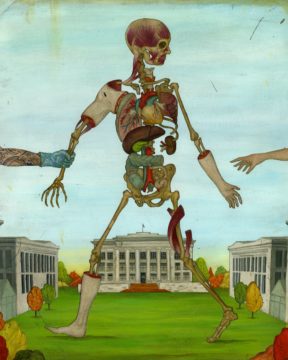 Once a body is given over to Harvard, that’s meant to be its final destination, where various parts are studied by Ivy League students suited up in surgical gowns and latex gloves. Future doctors and dentists work carefully on their assigned embalmed cadavers, learning about, say, the collection of nerves in the upper arm, or the tiny ligaments and bones that come together at the knee. They’re taught and tested and trained, and the donor’s ashes are usually handed back over to their family, their final sacrifice complete. The donors are generous people like Mazzone, who opted to give up traditional burials in the name of science.
Once a body is given over to Harvard, that’s meant to be its final destination, where various parts are studied by Ivy League students suited up in surgical gowns and latex gloves. Future doctors and dentists work carefully on their assigned embalmed cadavers, learning about, say, the collection of nerves in the upper arm, or the tiny ligaments and bones that come together at the knee. They’re taught and tested and trained, and the donor’s ashes are usually handed back over to their family, their final sacrifice complete. The donors are generous people like Mazzone, who opted to give up traditional burials in the name of science. “MANET/DEGAS,” the fall blockbuster at the Metropolitan Museum of Art, New York, begins with an unabashed, double-barreled bang: Édouard Manet’s last great self-portrait, paired up alongside one of Edgar Degas’s first. The juxtaposition provides a thrilling object lesson in the stolid compare-and-contrast curatorial methodology that defines the exhibition, but if it’s meant to show the two artists on an equal footing, it doesn’t stage a fair fight. Forty-six years old when he executed Portrait of the Artist (Manet with a Palette), ca. 1878–79, Manet is at the height of his painterly power, looking backward and forward at once. In an act of supremely confident artistic self-identification, his pose explicitly recalls the Diego Velázquez of Las Meninas, 1656, his lodestar and confessed maître, while his bravado brushwork nods to the advanced painting of the day (Impressionism) and beyond. Degas—two years younger than Manet on the calendar, but a tender twenty in his 1855 Portrait of the Artist—is, on the other hand, just at the beginning of his career. He, too, casts a historical glance, but to local tradition embodied by J.-A.-D. Ingres, and does so more timidly. Charcoal holder in hand as if ready to start (drawing coming before painting in any artist’s education at that time), Degas pictures his aspirations more than his accomplishments. Nevertheless, a piercing gaze already portends the intense psychological depths he would plumb over the next half century. This coupling alone makes a visit to the Met worth the trip.
“MANET/DEGAS,” the fall blockbuster at the Metropolitan Museum of Art, New York, begins with an unabashed, double-barreled bang: Édouard Manet’s last great self-portrait, paired up alongside one of Edgar Degas’s first. The juxtaposition provides a thrilling object lesson in the stolid compare-and-contrast curatorial methodology that defines the exhibition, but if it’s meant to show the two artists on an equal footing, it doesn’t stage a fair fight. Forty-six years old when he executed Portrait of the Artist (Manet with a Palette), ca. 1878–79, Manet is at the height of his painterly power, looking backward and forward at once. In an act of supremely confident artistic self-identification, his pose explicitly recalls the Diego Velázquez of Las Meninas, 1656, his lodestar and confessed maître, while his bravado brushwork nods to the advanced painting of the day (Impressionism) and beyond. Degas—two years younger than Manet on the calendar, but a tender twenty in his 1855 Portrait of the Artist—is, on the other hand, just at the beginning of his career. He, too, casts a historical glance, but to local tradition embodied by J.-A.-D. Ingres, and does so more timidly. Charcoal holder in hand as if ready to start (drawing coming before painting in any artist’s education at that time), Degas pictures his aspirations more than his accomplishments. Nevertheless, a piercing gaze already portends the intense psychological depths he would plumb over the next half century. This coupling alone makes a visit to the Met worth the trip. Geoffrey Hinton, the computer scientist who is often called “the godfather of A.I.,” handed me a walking stick. “You’ll need one of these,” he said. Then he headed off along a path through the woods to the shore. It wound across a shaded clearing, past a pair of sheds, and then descended by stone steps to a small dock. “It’s slippery here,” Hinton warned, as we started down.
Geoffrey Hinton, the computer scientist who is often called “the godfather of A.I.,” handed me a walking stick. “You’ll need one of these,” he said. Then he headed off along a path through the woods to the shore. It wound across a shaded clearing, past a pair of sheds, and then descended by stone steps to a small dock. “It’s slippery here,” Hinton warned, as we started down.